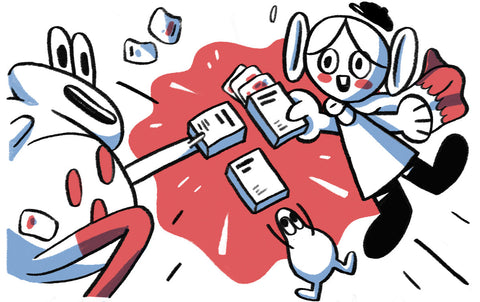Tiny changes and habits can add up to create value that far outstrips the sum of its parts.
What if one of those changes was something as simple as a ten-minute break?
Or rather, several ten-minute breaks spaced throughout your working day.
Microbreaks can help in so many ways:
- By supporting physical health (reducing muscle strain, improving blood flow, lessening the risk of nerve injuries, preventing eye strain)
- By supporting mental health (reducing painful symptoms, giving you time in nature, encouraging social interactions)
- And all that lovely stuff about improving creativity and productivity by getting a change of scenery, a new perspective and a break away from the everyday.
They’re not a cure-all, but they’re such a small change to make. If you need a pick-me-up to help you handle long days in front of the computer, microbreaks may be the solution you’re looking for!
What is a microbreak at work?
There’s no definitive length of time or activity that makes for a microbreak. Microbreaks are just short breaks you take throughout the day, especially if you’re working on the same thing or in the same place for most of the day.
To really be considered ‘micro’, they are generally ten minutes at most. However, depending on what you use it for, the time taken can vary, for example:
- 30 seconds focussing on things the far side of the room and out of the window to alleviate eye strain.
- A two-minute walk to get a coffee from the office kitchen (with extra time allowed if you are distracted by chatting to a colleague).
- A three-minute stretch routine you complete every hour.
- Your last microbreak of the day might be a six-minute meditation
Benefits of microbreaks at work; what the research says
There are lots of nailed-on benefits of microbreaks with scientific research to back them up. Here’s just a handful!
The accumulated strain of deskwork impairs our bodies. A meta-analysis of data from 22 studies shows statistically significant benefits of microbreaks, including:
- Boosting vigour
- Reducing fatigue
And these benefits increase, unsurprisingly, with the length of the break! Interestingly, they also found that the benefits are only significant in between tasks that demand less cognitive work.
The researchers say that “the data support the role of micro-breaks for well-being, while for performance, recovering from highly depleting tasks may need more than 10-minute breaks”. This is why your longer breaks, evenings and weekends are so important.
Other studies show the benefits of microbreaks include:
- Increased ‘positive affect’, which in turn predicts greater performance.
- Exposure to nature during breaks improves mood (and also correlates with lower cravings for unhealthy food).
Other interesting findings include:
- Breaks for snacks or drinks do not confer the same benefits as other types of break.
- Some of the indirect effects (positive affect) are only significant in workers who have low engagement with their work in general.
- Individuals tend to take microbreaks when wishing to reward themselves (i.e., after experiencing ‘task aversiveness), rather than when they want to replenish their energy (i.e., when they need to ‘recover’).
- Watching short-form comedy videos is more effective at relieving physiological stress than listening to music or watching a documentary (although all three are effective).
- Microbreaks improve mood and willingness to engage with work, and maintain task performance levels.
Okay, so what does all that mean in practice?
How to take an effective microbreak at work
Well, one way to interpret the findings is this:
“Building a daily practice of regular microbreaks is beneficial for energy levels, wellbeing and performance, especially if the break includes views of nature and is not specifically taken in order to snack.”
That’s because, by building it into our day at timed intervals, we avoid our innate drive to do so only when we are deserving of reward.
And if you aren’t already aware, there’s a lot of research to show that sitting down all day (at work and/or at home) is so bad for our health that even regular exercise isn’t enough to make up for the damage it does.
So, in short:
- Take one ten-minute break away from your desk per hour worked.
- Do so regularly, not just when you feel you’ve earned it (set a timer to remind you!).
- Try to incorporate nature; if you can’t do that, watch a funny video instead.
- Don’t snack in your microbreaks.
- If you usually sit down for work, don’t sit during your microbreaks.
- Add in eye-strain relieving exercises, stretching (or other movement) and other intrinsically rewarding activities such as chatting with colleagues.
That way, you’ll optimise your breaktime so you get maximum benefit, and in turn, you’ll be able to work smarter. And if your boss isn’t convinced about letting you off the hook for ten minutes an hour? Well, show them this article!









